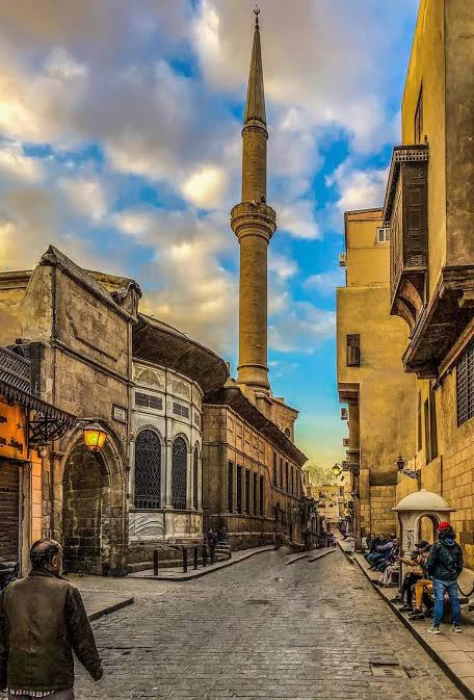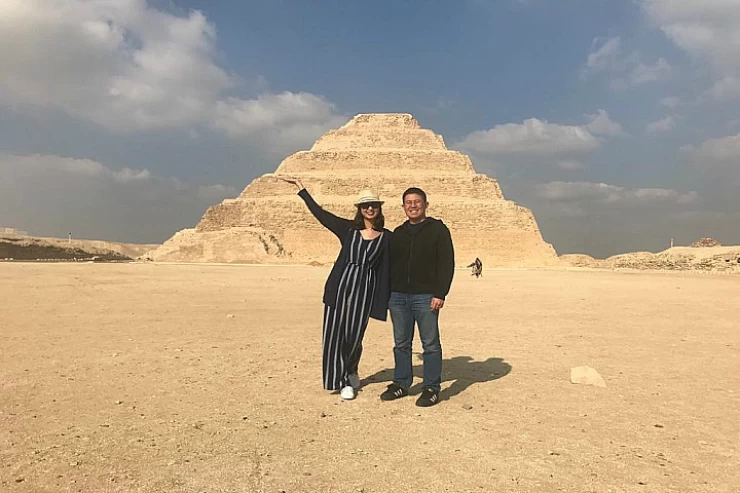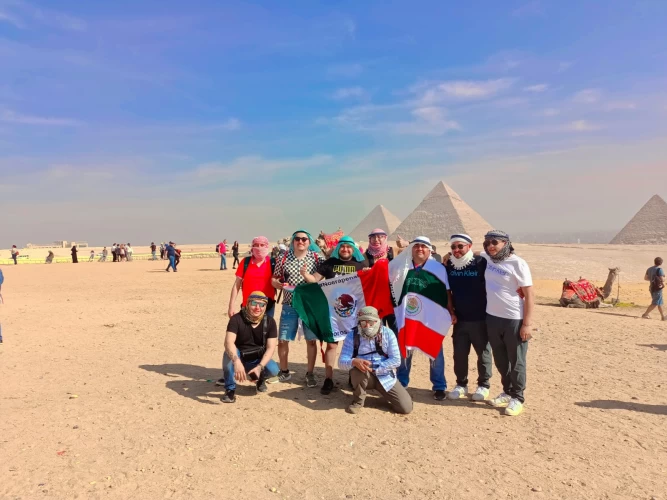
Sabil Sulayman Agha Al-Silahdar
Sabil-Mosque of Sulayman Al-Silahdar, The monument contains an architectural group, including a mosque, "Kuttab" and "Sabil" in a single building connected to each other, which is distributed in a unique architectural form as the path of Suleiman Agha Sulaydar.
The mosque was built in the Ottoman style, which is unparalleled in Islamic architecture and its beauty lies in the accuracy of the details that will catch your eye, especially the tall minaret, which looks like a high spear hugging the clouds in the sky. The minaret consists of two cylindrical levels between them.
The location of the mosque: The mosque is located in Al-Mu’izz Li-Din Allah Al-Fatimi Street at Burjuan Street in the extension of Al-Nahhasin Street from Bab Al-Sha’aria Square.
It was built by Prince Suleiman Agha Salhdar Bey, who came to Egypt as a soldier who came with Muhammad Ali Pasha to fight the French. The construction of the mosque took two years (1253-1255 AH = 1837-1839 AD). Currently, under the mosque, there is a school and shops.

Muhammad Ali Pasha | Muhammad Ali of Egypt
The architectural group consists of a drinking fountain for passers-by and is located below the "Kitab" and includes a mosque for religious rites and a "Kitab" for the education of Muslim orphaned children. There are three facades of the mosque.
The main facade is located on the southeast side and overlooks Al-Muizz Li-Din Allah Street. It includes the facade of "Kuttab", "Sabil", and the mosque.
The main entrance door is rectangular, the opening of the door is surrounded by two semi-circular frames, is encapsulated with Arabic calligraphy,
including Arabesque, and features its stone facade, culminating in an outward-slant wooden flap with vegetable ornaments, and contains various designs with carvings and ornaments that reflect the influence of Renaissance European arts, the marble motifs and oil colors on the wooden roofs give an Ottoman character.
As for the southern and northern facades, they look at Barjouan Street, and the minaret is located to the left of the “Sabil” entrance and the path at the main facade, and it is built with a "lobe" stone, and it has a cone-shaped top that looks like a pencil. It reflects the style of the minaret in the Mohamed Ali Pasha Dynasty and Ottoman times.
As for the way destination, it covers in white marble with writings and decorations, and its Windows are made of bronze cast with empty decorations, and from the manifestations of charity in the design of the "Sabil", there is a place dedicated to drinking pets.
The water storage tank is an Ottoman architectural construct based on the system of a dome raised on columns, each dome decorated with colorful oil reliefs, vegetable, and engineering paintings, and Quranic writings, and capable of carrying huge weights, by distributing loads on the columns in a balanced manner.
The entrance to the mosque is a path through which people climb a few steps to pray to reach the mosque’s courtyard, which is surrounded by four corridors carried on marble columns.
One of the most important features of the mosque is the presence of wooden domes and an air valve to ventilate the halls inside the mosque. The place of prayer is covered with a wooden ceiling decorated with oil inscriptions, and in the place of prayer on the qibla wall there is a mihrab made of marble.
Above the main entrance is a white marble foundation plaque mounted inside a wooden frame with gilded Turkish inscriptions, a rectangular window containing iron fingerprints, and to the left of the entrance was a shop that originally had three shops and four Windows for the chapel.
Latest Articles
Admin
Seabourn Sojourn Cruise Stops in Safaga Port
The Seabourn Sojourn, the flagship vessel of Seabourn Cruise Line's ultra-luxury fleet, was built in 2008 at the T. Mariotti shipyard in Genoa, Italy. Measuring 198 metres, it can accommodate up to 450 guests in its 225 spacious all-suite staterooms.
Admin
Norwegian Sky Cruise Stops in Safaga Port
Norwegian Cruise Line operates a cruise ship called the Norwegian Sky. It was constructed in 1999 and can accommodate 2,004 passengers in addition to 878 crew members. The ship has several dining establishments, lounges and bars, a spa and fitness center, swimming pools, and a number of entertainment areas.
Admin
Explora II Cruise Stops in Safaga Port
Explora II, the second vessel in the Explora Journeys fleet, sets sail in 2024 to redefine luxury cruising. With 461 ocean-front suites, 9 culinary experiences, and 4 pools, this haven of sophistication and sustainability promises an unforgettable "Ocean State of Mind" journey to inspiring destinations.
Admin
Mein Schiff 6 Cruise Stops in Safaga Port
The Mein Schiff 6 is the latest cruise ship in the renowned TUI Cruises fleet, offering passengers a luxurious and sophisticated cruise experience. At 315 metres long, this floating resort features a range of dining options, entertainment, and recreational facilities, including a spa, fitness centre, and sports amenities.
Admin
Mein Schiff 4 Cruise Stops in Safaga Port
When the Mein Schiff 4 cruise ship docks in Safaga, Egypt, passengers are granted access to a realm of ancient wonders. Aboard this state-of-the-art vessel, guests can embark on meticulously curated shore excursions that showcase the region's most iconic landmarks, including the Giza Pyramids, the enigmatic Sphinx, and the remarkable tombs and temples of the Valley of the Kings in Luxor.
Admin
MS Europa Cruise Stops in Safaga Port
The Silver Moon, Silversea's latest flagship, is a luxury cruise ship that offers an exceptional travel experience for Venezuelans exploring Egypt. With a capacity of 596 guests and an impressive 40,700 gross tonnes, the Silver Moon maintains the small-ship intimacy and spacious all-suite accommodations that are the hallmarks of the Silversea brand.
















